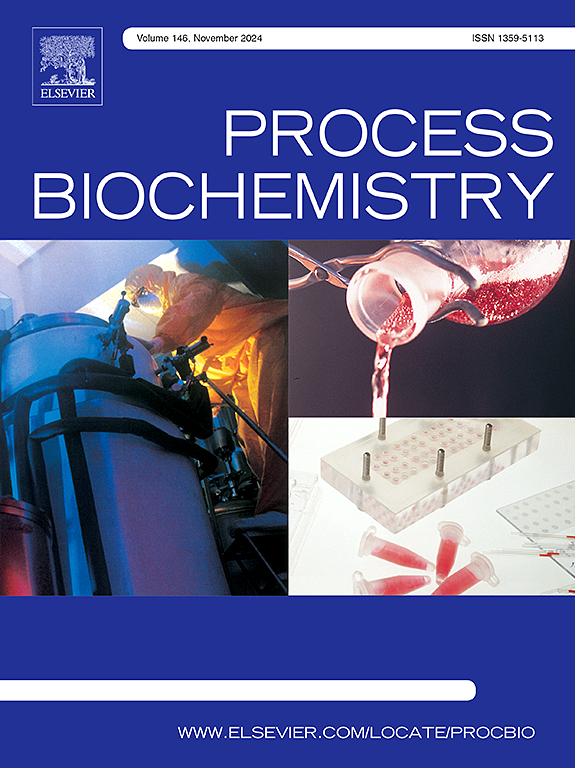Efficient removal of atrazine in wastewater by washed peanut shells biochar: Adsorption behavior and biodegradation
IF 3.7
3区 生物学
Q2 BIOCHEMISTRY & MOLECULAR BIOLOGY
引用次数: 0
Abstract
Peanut shell powder was washed with water and then calcined to produce biochar, which acted as an adsorbent and biofilm supporter for the removal of atrazine (ATR). Biochar sample prepared by washing 6 h (named BC-W) achieved the highest biodegradation amount (Qm, 12.48 mg/g). The adsorption process of ATR on BC-W involved hydrogen bonding and π-π interactions. We found that the removal rate of ATR by biodegradation was 6.34–6.75 times that of adsorption, with an ATR concentration of 30 mg/L under half aeration. The results of high-throughput sequencing showed that there were two dominant bacterial phyla in the BC-W samples after biofilm culture: Firmicutes (51.89 %) and Proteobacteria (47.79 %), among which Bacillus, Clostridium (sensu stricto), and Pseudomonas, played a major role in the biodegradation of ATR. These findings showed that biochar could be employed as a low-cost adsorbent for the removal of pesticides from wastewater, also a biofilm supporter for enhanced biodegradation of organic pollutants.
花生壳生物炭对废水中阿特拉津的高效去除:吸附行为和生物降解
花生壳粉经水洗后煅烧制成生物炭,作为吸附剂和生物膜载体去除阿特拉津(ATR)。水洗6 h制备的生物炭样品(命名为BC-W)生物降解量最高(Qm, 12.48 mg/g)。ATR在BC-W上的吸附过程涉及到氢键和π-π相互作用。我们发现,在半曝气条件下,生物降解对ATR的去除率是吸附的6.34-6.75倍,ATR浓度为30 mg/L。高通量测序结果显示,生物膜培养后BC-W样品中存在两个优势菌门:厚壁菌门(51.89 %)和变形菌门(47.79 %),其中芽孢杆菌、Clostridium (sensu stricto)和Pseudomonas在ATR的生物降解中起主要作用。这些发现表明,生物炭可以作为一种低成本的吸附剂去除废水中的农药,也可以作为生物膜载体增强有机污染物的生物降解。
本文章由计算机程序翻译,如有差异,请以英文原文为准。
求助全文
约1分钟内获得全文
求助全文
来源期刊

Process Biochemistry
生物-工程:化工
CiteScore
8.30
自引率
4.50%
发文量
374
审稿时长
53 days
期刊介绍:
Process Biochemistry is an application-orientated research journal devoted to reporting advances with originality and novelty, in the science and technology of the processes involving bioactive molecules and living organisms. These processes concern the production of useful metabolites or materials, or the removal of toxic compounds using tools and methods of current biology and engineering. Its main areas of interest include novel bioprocesses and enabling technologies (such as nanobiotechnology, tissue engineering, directed evolution, metabolic engineering, systems biology, and synthetic biology) applicable in food (nutraceutical), healthcare (medical, pharmaceutical, cosmetic), energy (biofuels), environmental, and biorefinery industries and their underlying biological and engineering principles.
 求助内容:
求助内容: 应助结果提醒方式:
应助结果提醒方式:


